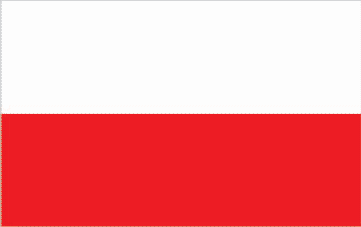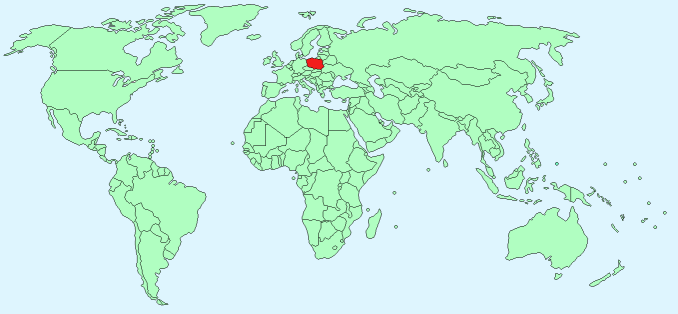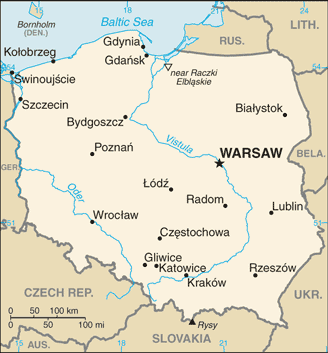Poland


Continent – Europe
Region – Central Europe
Size – 312,685 km²
Geography – flat plains with hills in the south
Language – Polish, Silesian
Religion – Roman Catholic 86.9%, Orthodox 1.3%, Protestant 0.4%, other 11.4%
Monetary Unit – Polish zloty
Natural Resources – coal, sulphur, copper, natural gas, silver, lead, salt, amber, arable land
Agriculture – potatoes, fruits, vegetables, wheat; poultry, eggs, pork, dairy
Industry – machine building, iron and steel, coal mining, chemicals, shipbuilding, food processing, glass, beverages, textiles

Neighbouring Countries – Russia, Lithuania, Belarus, Ukraine, Slovakia, Czech Republic, Germany
Population – 38,562,189 (2015 estimate)
Population Growth Rate – -0.09%
Average Life Expectancy – 77.4
Capital City – Warsaw (1,722,000)
Highest Mountain – Rysy (2,499 m)
Longest River – Vistula (1,047 km)
Climate – Temperate – cold winters -5°C to 0°C, warm summers 18°C to 25°C
Yearly Rainfall – 60 cm (approx)
Plant Life – pine, birch, beech, elm, spruce, fir, oak
Animal Life – Lynx, wildcat, European bison, moose, wild horse, wild goat, wild boar, bats, beaver, grey wolf, European elk
Bird Life – white stork, white tailed eagle, greater spotted eagle, Eurasian hobby, western marsh harrier, corncrake
Harvard Reference for this page:
Heather Y Wheeler. (2015). Poland. Available: https://www.naturalhistoryonthenet.com/Facts_Figures/Country_Facts/poland.htm. Last accessed Tuesday, July 19, 2016
Facts and Figures Pages
